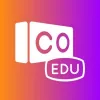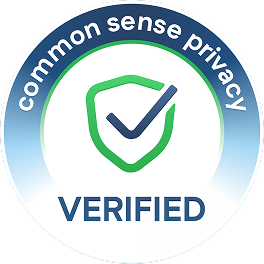Take a look inside 27 images
CoSpaces Edu
Pros: Created with classrooms in mind; offers a creative approach to almost any concept.
Cons: The free version is very limited, and there are few features to make it accessible to all students.
Bottom Line: With a little learning up-front, this tool is a great choice for creative collaboration and projects.
CoSpaces Edu makes available many existing lesson plans for teachers to use and customize for their classes. For beginners, it may be useful for teachers to create a basic scene with a couple of objects in it and give students instructions on what else to add or change. For a second lesson, teachers could just give students a blank slate and have them plan and design their own creations to tell a story, create a simulation, or demonstrate their understanding of a concept.
It's easy to set up student groups, so students can pair up or get into small groups to co-create a scene. Teachers could divide up the labor between team members based on production role, such as assigning one student to place objects and control the camera, another to animate and set basic behaviors for the objects, and so on. To get started, there are a lot of example projects in the CoSpaces Edu gallery.
Since it's possible to share CoSpaces, students could showcase them to each other after a couple of creation days (or maybe a week of online asynchronous creation) and play each other's scenes or games. And there's definitely the potential for having students co-design with students from other classes from anywhere in the world.
CoSpaces Edu is a surprisingly delightful entryway into VR and AR creation. Creating a CoSpace is just a matter of dropping objects into a scene, setting the background and surroundings from many pre-created options, and then attaching animations and behaviors to those objects. Students create the scene's code with built-in CoBlocks that feature a drag-and-drop, Lego-style coding interface that Scratch popularized. The app is just a web app, so the only requirement is a good internet connection and a web browser on almost any sort of device. The most common workflow would probably be to create scenes (CoSpaces) on a desktop computer and then "play" them using a smartphone or tablet. If using a smartphone, it's possible to also insert the phone into a headset (such as Google Cardboard) for a full VR experience!
The Pro version allows adding more than 10 objects to a scene, setting up a physics engine with common things needed to create a game (like object collision detection and gravity effects), and attaching more complex code blocks to an object. Unlocking the paid version also allows creators to directly script code for the objects, which is pretty great as it means CoSpaces Edu would be suitable for a wide range of ages and would double as a good entryway to game design.
Because of the depth and specificity of the tools and settings, CoSpaces Edu truly allows for a wide range of learning. Not only are students practicing executive functioning, coding logic, and iteration from the creation process, but -- depending on the assignment -- they're applying that process to a story or concept. Also, the creative nature of the tool means they're building their own understanding while making a dynamic, interactive piece of media that other students can learn from.
The online community around CoSpaces Edu seems welcoming for newbies as well, and it would be a good additional resource for a class that has students learning from each other together as they try out challenges that a teacher has set for them. For teachers who feel daunted by all of the features, there are plenty of onboarding materials, ready-made lesson plans, and other supports to get started. More accessibility features would give a wider variety of students an easier time with the tool, so those option would be a great addition.





































